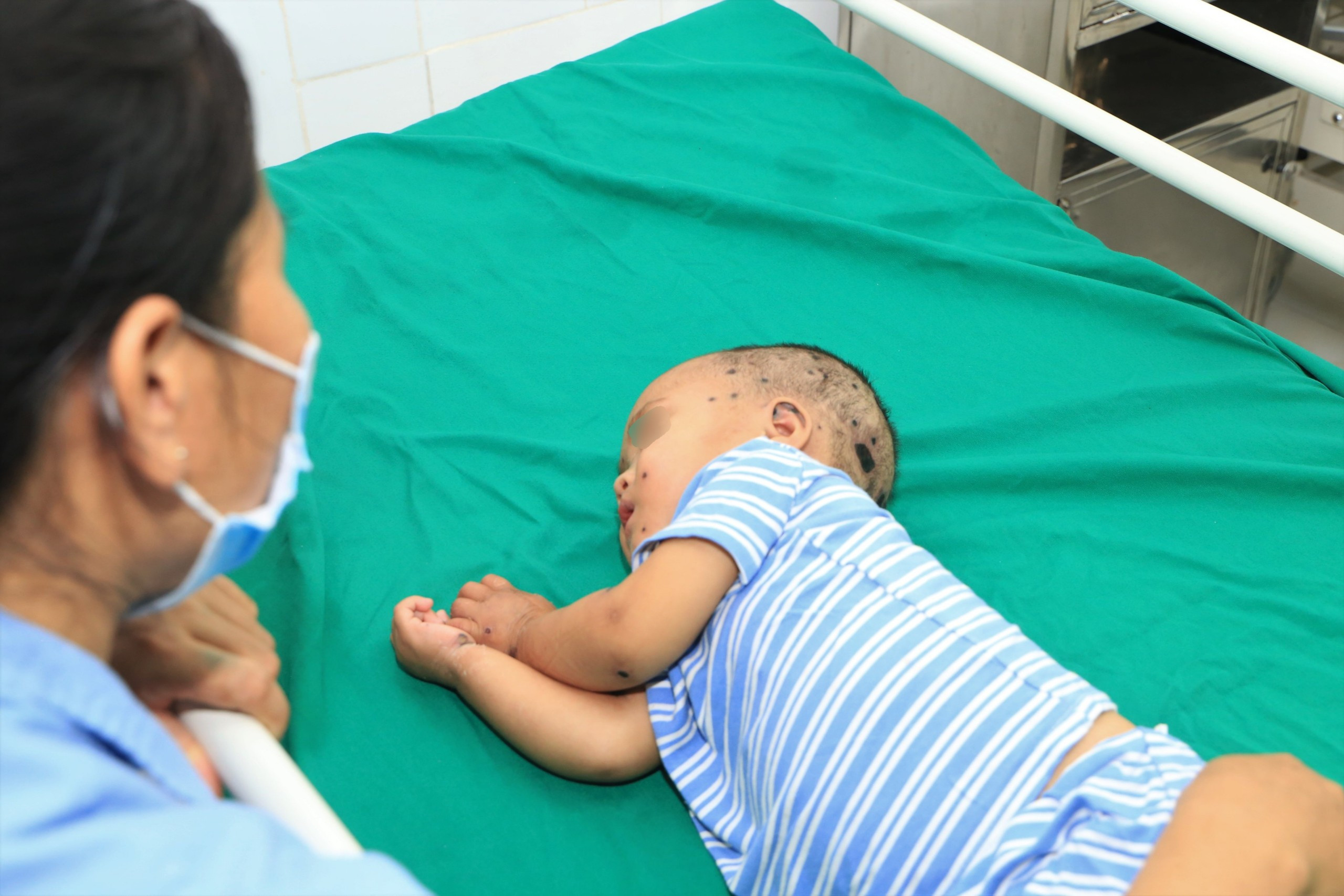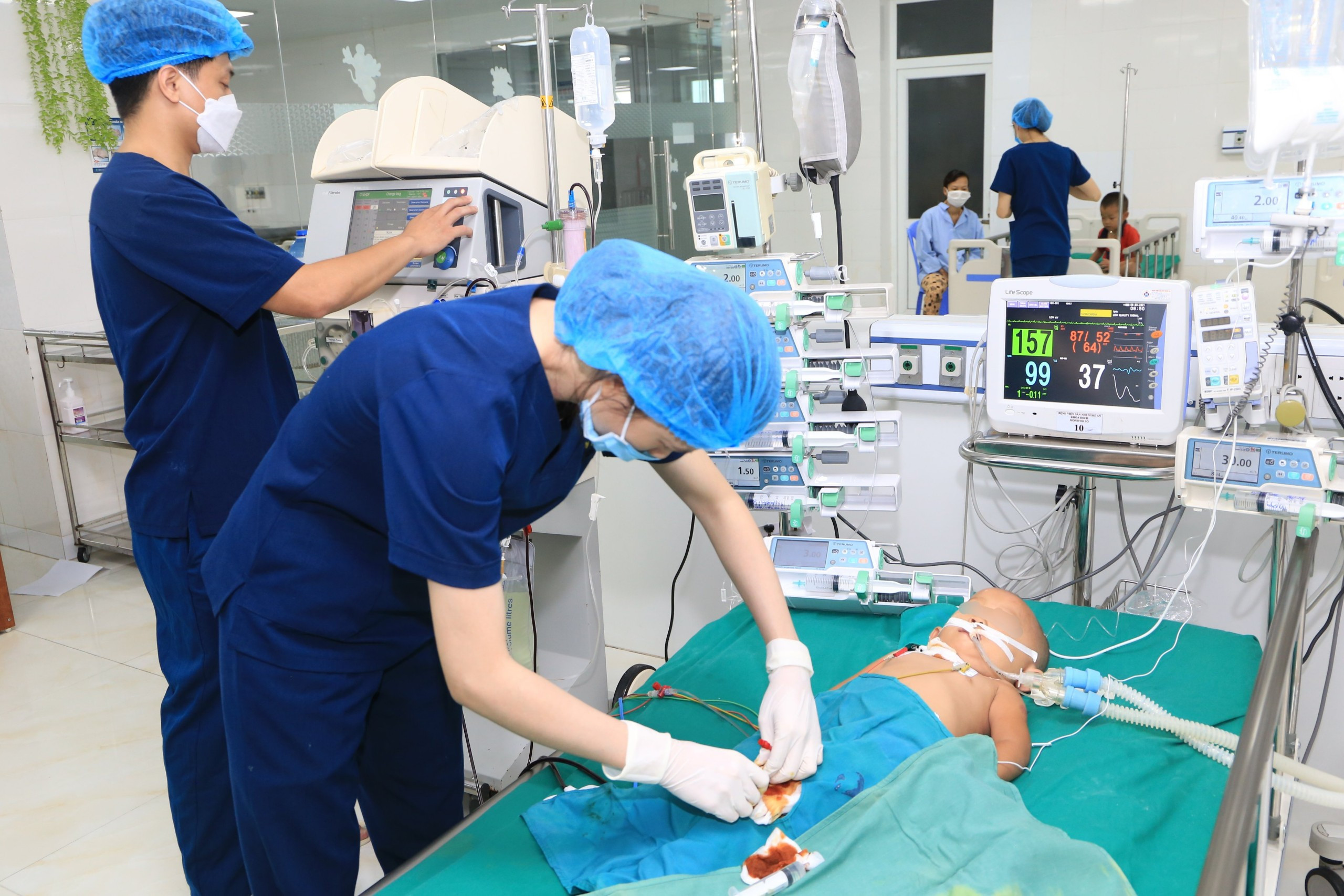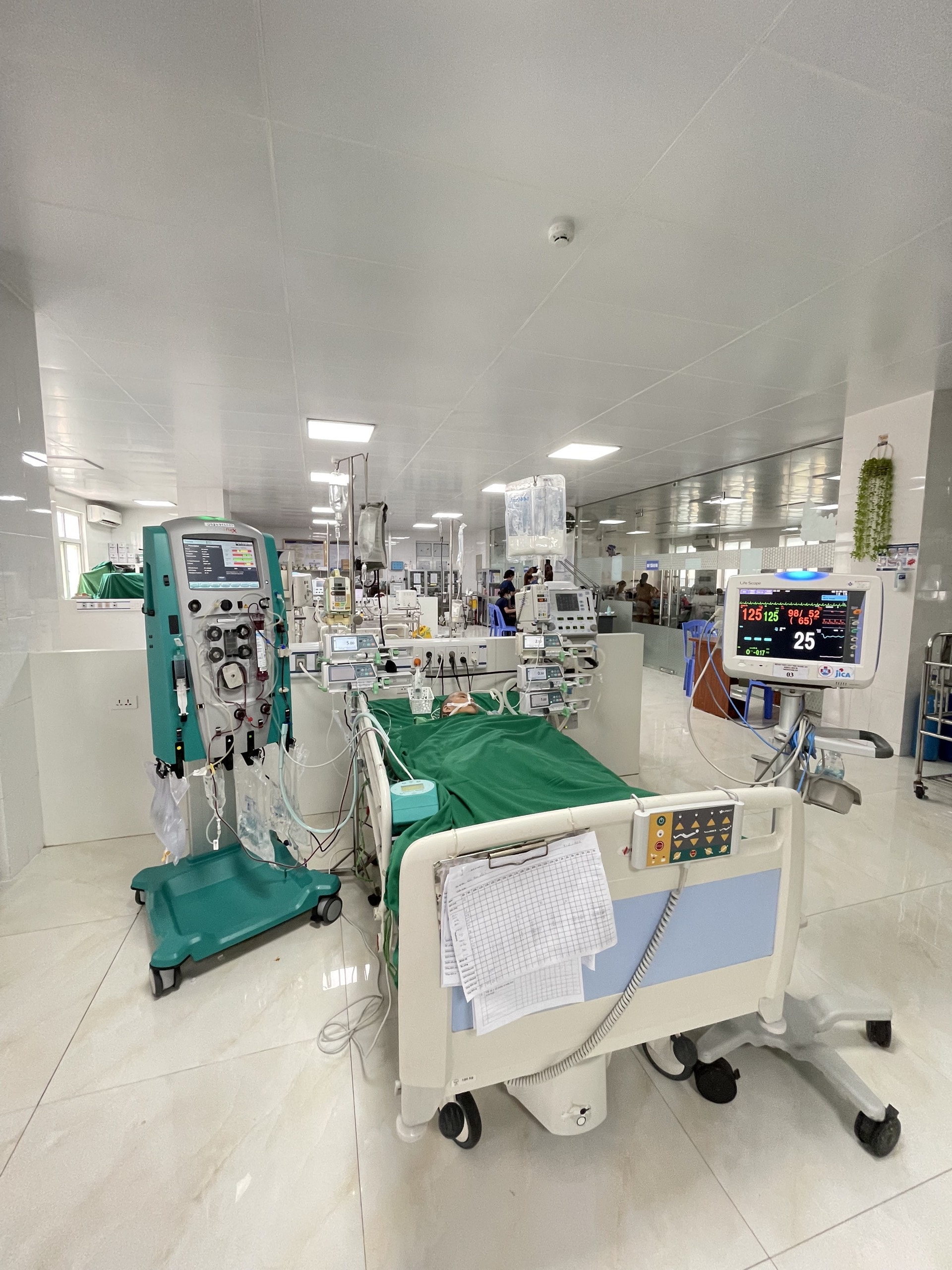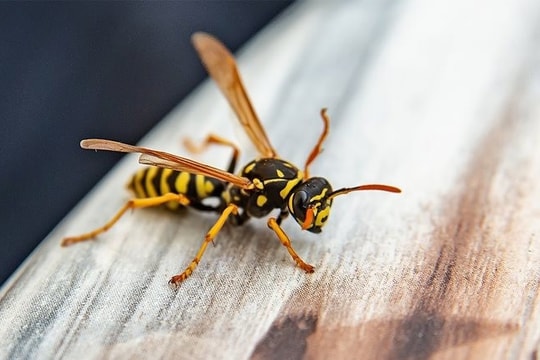Nghe An: Many children in critical condition had to be taken to the emergency room due to bee stings.
(Baonghean.vn) - Over the past two weeks, Nghe An Obstetrics and Pediatrics Hospital has continuously received and treated many young children in life-threatening conditions, suffering from anaphylactic shock and multiple organ failure complications due to bee stings.
 |
| Hyn was stung by a bee, with over 150 swellings all over her body, most concentrated on her head and face. Photo: Hoang Yen |
One of the children who was stung by bees and had to be hospitalized was HYN (18 months old, in Nghia Dan district). HYN's mother said: At 10am on July 28, while cooking in the kitchen, she heard her youngest daughter screaming behind the house. Rushing to find her child, she was shocked to see that her two siblings were being attacked by a large swarm of bees. HYN was in pain and struggled, but because she was too young, she could not run away, she could only lie still and endure the attack of the bees.
Quickly putting on a long-sleeved shirt, rushing to rescue her two children, HYN's mother herself was also stung by many bees on her head. Gritting her teeth in pain, she carried her little daughter to ask for help from neighbors. Quickly, HYN was taken to the emergency room at the Northwest Regional General Hospital and had to be urgently transferred toNghe An Obstetrics and Pediatrics Hospital.
Upon arrival, the emergency team found the patient's condition to be very critical. HYN was in a lot of pain, with over 150 swellings caused by bee stings all over his body, most concentrated on his head and face (about 100), accompanied by difficulty breathing and cyanosis. Test results showed multiple organ failure, with impaired liver and kidney function.
Diagnosing the patient with severe anaphylactic shock and complications of blood clotting disorders, the doctors actively treated him according to the anaphylactic shock protocol combined with continuous blood filtration... After 8 days of continuous blood filtration, the patient was often warned of a high mortality rate, but fortunately, gradually, baby HYN responded to the treatment protocol, gradually regained consciousness, and her body parameters returned to normal.
 |
| Performing continuous blood filtration for NTKN. Photo: Hoang Yen |
Most recently, on August 5, the Intensive Care and Anti-Poison Department received a case of three sisters from the same family being stung by bees. While playing hide-and-seek in their garden, three children NTBY (11 years old), NVT (5 years old), and NTKN (3 years old) (in Yen Thanh district) accidentally touched a beehive. A large swarm of bees rushed out to attack, the eldest sister BY hugged and protected her youngest sister KN. Hearing her children crying in the garden, the mother panicked and called for help, and moved all three children down.Nghe An Obstetrics and Pediatrics Hospital.
Of the three children, NTKN (3 years old) is the youngest, has weak health, and was attacked the most by bees, so his condition is very critical and he has to undergo continuous blood filtration and be closely monitored. His two older siblings have recovered quickly.
Dr. Nguyen Hung Manh - Head of the Department of Intensive Care and Anti-Poison said: Every year, summer is the time when the department records many cases of bee stings that require hospitalization, because this is the season with many types of flowers and fruits such as pineapple, longan, lychee, etc. that attract bees to build nests and forage.
 |
| Children in critical condition due to bee stings are common in the summer. Photo: Hoang Yen |
When stung by a bee, the patient needs first aid, initial treatment and immediate medical monitoring because serious reactions such as anaphylactic shock and bee venom poisoning can appear quickly. Bee venom poisoning is a systemic manifestation when bee venom enters the body, causing toxicity that destroys cells, damages organs, and eventually leads to multiple organ failure.
As soon as a child is stung by a bee, parents need to quickly move the victim to a safe area to avoid more stings and must immediately take the victim to the nearest medical facility when one of the following signs appears: multiple stings; stings on the head, face, neck accompanied by signs of rapidly spreading swelling; signs of fever, fatigue, difficulty breathing, decreased urine output, blood-red urine, signs of allergy, rash, red skin all over the body or feeling dizzy or lightheaded.
In the emergency cases of bee stings in the past 2 weeks, most of the children's parents did not know about the presence of bee nests in their gardens beforehand, so they did not take precautions for their children. Therefore, to proactively prevent this, parents should not let trees grow densely around the house, making it easy for bees to nest, and should regularly clean and clear bushes around the house to prevent bees from nesting./.



.jpg)


